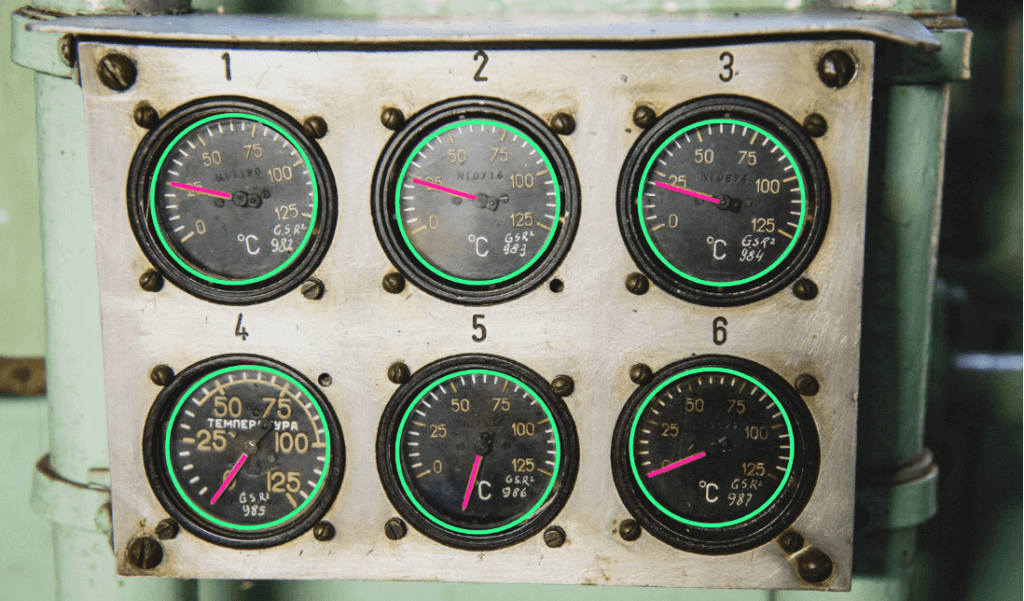Power plants often rely on a diverse range of analog and digital meters to monitor their operations.
To ensure the smooth functioning of the plant, it is essential to visually inspect and record the measurements from these meters each month. However, this task can be time-consuming and prone to human errors. An alternative solution is to create an application that automates the meter reading process. Such an automated application can be built with computer vision technology, which increases efficiency and accuracy, resulting in overall improved reliability of the meter reading.
Upon capturing an image of the targeted meters, the computer vision solution can be broken down into two fundamental steps:
- Detection of the meters on the image
- Reading of the meter measurements

In recent years, Deep Neural Networks (DNNs) have demonstrated great success in object detection, particularly in the realm of Convolution Deep Neural Networks (CNNs) for computer vision applications. Regardless of the type of DNN algorithm chosen for this task, an abundance of diverse and annotated data is necessary for effective fine-tuning or training of a model that generalizes well in real-world scenarios. If you only have a few samples for each type of meter and need to detect them, a traditional approach may be more suitable than a data-intensive method.
Due to the limited quantity of data, we opted to employ traditional computer vision methods such as feature matching. Our approach involves defining a reference image for a specific location where any type of meter could be placed. To facilitate this, we only need to define the bounding boxes for the meters present in the reference image. During the inference, the user can pass the algorithm a query image captured from any angle. However, the challenge lies in aligning the bounding boxes onto the query image. We need to perform two essential steps for this:
- Finding the corresponding keypoints and descriptors between the reference and the query images
- Finding the perspective transformation between the two image planes.

Several types of meters, such as circular, rectangular, and oil level, were encountered in our dataset. Given this variety, we used various sets of techniques tailored to each specific location. These techniques proved useful, as we already knew that the data might show slight variations in different scenarios. Our feature matching process in the first step enabled us to extract the Region of Interest (RoI) precisely and create a generalizable algorithm. Even though we managed to read most of the meters, we faced some difficulties with low-resolution images. To overcome this issue, we incorporated a generative model into the application. This image/video restoration model helped us to make our approach work also on the edge cases.

Maximising Visual Analysis with Computer Vision
In this blog post we have highlighted just one example use case, where our deep expertise in computer vision can help you automate your visual inspection process. With this approach, you can eliminate tedious and time-consuming manual visual checks as part of your operations. Additionally, precise and frequent readings of meter values will enable you to perform advanced analytics, such as forecasting and anomaly detection. If you’re intrigued by our approach, please don’t hesitate to reach out to us via email!
Check out more computer vision capabilities here.
–
For more information, please contact:
Shun Hirai
CEO, Top Data Science
[email protected]
+358 50 325 6756
–
Authors:
Enes Özipek, Senior Data Scientist
Shun Hirai, CEO




